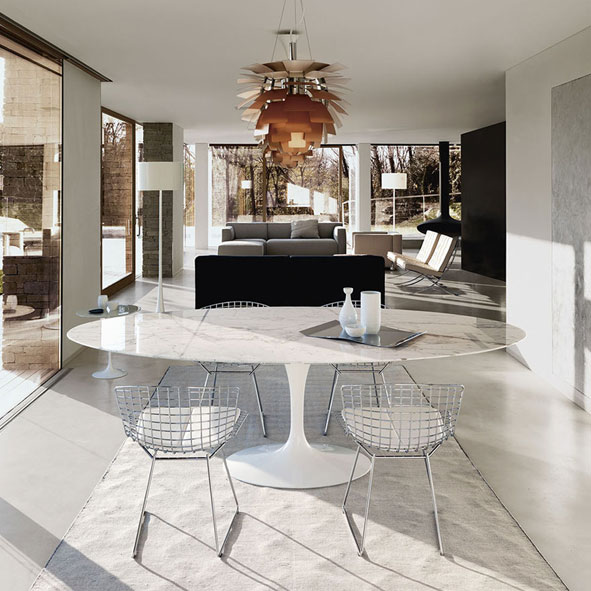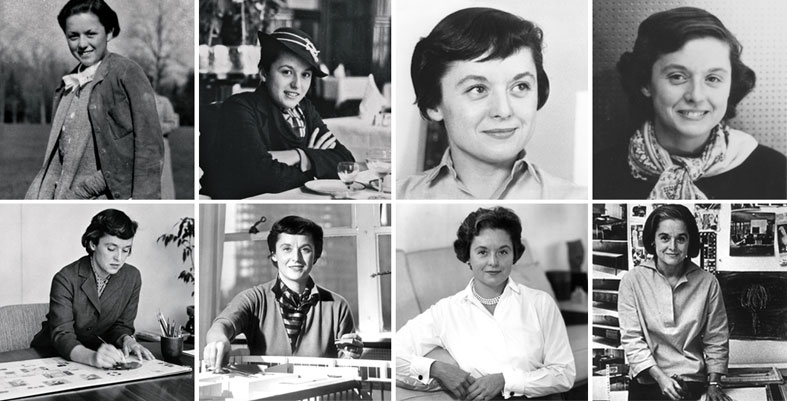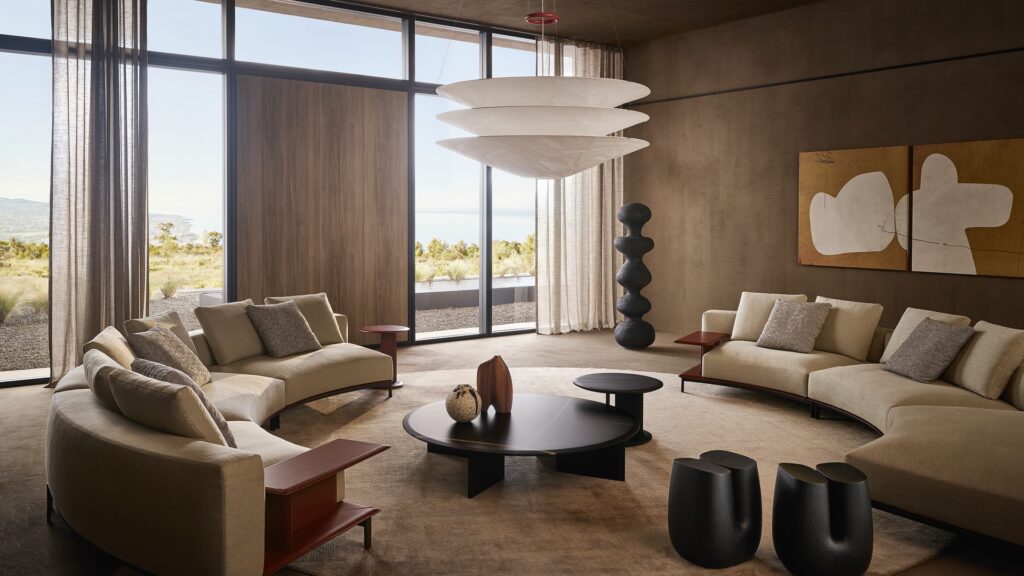Florence Knoll, a pioneer of contemporary design, designer and entrepreneur, passed away in January 2019, at the age of 101. Her legacy includes some of the most important icons of Midcentury Modern and Space Age furniture, including Eero Saarinen’s celebrated table with its Tulip chairs, as well as a culture of innovation in interior design.

Florence Knoll and the American dream
The story of Florence Knoll is the epitome of the American dream, turning into legend in the world of architecture and design. Born Florence Schust in Michigan in 1917, she is an orphan at the age of 12, and attends the Kingswood Girls’ School in Cranbrook. The good fortune is that the Finnish architect Eliel Saarinen designed the same school, and that he was also the dean of the Cranbrook Academy of Arts, where Florence continued her studies. Florence Schust was “adopted” by the Saarinen family, establishing a close friendship with Eero Saarinen.

During the 1930s, Florence practices in Walter Gropius and Marcel Breuer‘s firms, and studies with Ludwig Mies Van Der Rohe at the Illinois Institute of Technology.

At the end of the 1930s, she meets Hans Knoll, a German immigrant furniture entrepreneur, who becomes her husband and with whom the adventure of Knoll Associates begins.

Hans and Florence Knoll (known as Hans and Shu to all their friends and associates) aim to industrialize furniture, merging design, architecture and mass production. One of Florence Knoll’s favourite saying words was “Good design is good business“, highlighting the importance of design in both residential and contract furniture.

Interior design according to Shu
Florence Knoll was the creator of the Knoll Planning Unit, the in-house studio which handled the interior architecture projects, from concept to complete realization, including the finishing. Interior design in the 1940s and 1950s was still to be discovered. The Knoll Planning Unit was a brand new tool, which allowed the architect to analyze the project by considering all aspects, spatial, functional, emotional, finishing materials, colors, furniture.

Today we take it for granted that the design of a work or residential space will develop around a global concept; in the 1950s, this awareness was not yet so diffused and, thanks to Florence Knoll and her insights, the culture of contemporary design started to spread widely.

Florence Knoll was not only an experienced architect and planner. Although product design was not her major activity, the Lounge Collection, which she designed in 1954, became an icon of contemporary design. Even though, as she herself said, “I needed for a project some products that didn’t exist and that nobody wanted to design, so I designed them myself”.

Florence Knoll and the icons of American design
Eero Saarinen designed the Womb armchair, which went into production in 1948 and is still in the catalogue. An icon of organic design, it comes directly from the project with which Saarinen himself and Charles Eames won the MoMA competition in 1941 and, like all designs of the time, it took about 7 years to find suitable manufacturing techniques and materials.

In between organic design and materic research, the Diamond Chair, designed in 1952 by Harry Bertoia, a naturalized American of Friulian origin. A journey into the potential of metal wire, which unwinds around the body to build an armchair with an embracing shape. A product that would never have seen the light of day if Florence Knoll hadn’t left the designer carte blanche.
The Tulip Collection by Eero Saarinen is also another of the icons of the Space Age. Designed in 1955/56, it came from the architect’s request to have table and chair “free from the slum of legs underneath the table“.

Another great Knoll classic is the Barcelona armchair by Ludwig Mies Van Der Rohe, designed in 1929 for the German pavilion at the Expo (International Exposition) in Barcelona, Spain. The collection was developed for the first time for the furnishing of Philip Johnson’s apartment in New York by Mies Van Der Rohe with Lilly Reich. (The Barcelona armchair had already been in production in Germany since the 1930s, and the license was acquired by Knoll in 1947).

Knoll collection also includes one of the best-known office chairs of all time, Charles Pollock’s Executive Chair. One of the first ergonomic executive office chairs, the Charles Pollock Executive Chair entered the Knoll catalogue in 1963 and is still in production.

A seamless aluminium band runs around the back and seat, with the structural function of “holding” the parts together, and the visual function of defining the design. Although the author is Charles Pollock, it is commonly believed that Florence Knoll’s eye guided the project to create the icon it is today.

A legend of contemporary design
In 1955 Hans Knoll died suddenly and Florence Knoll took over the chairmanship of the company until 1960; then she left to concentrate on the design department, and in 1965 she left the company with no permanent positions in favour of occasional consultancies, until she left completely.

Florence Knoll has been one of the most prominent figures in the history of contemporary design. The Knoll Planning Unit was a first-rate innovation in interior design; the products of Eero Saarinen, Harry Bertoia, Charles Pollock and Mies Van Der Rohe are absolute icons in the history of interior design.

If this is not enough, Florence Knoll also pioneered the culture of the showroom design, with the Knoll showrooms in New York (1951), Milan (1956), Dallas (1956) and Los Angeles (1960), where her ability to combine corporate philosophy and local culture allowed her to perform at her best.

Finally, in 2002 Florence Knoll was awarded with the National Medal of Arts, as evidence of her very important contribution to the development and success of Modernism in the United States.
(Roberta Mutti)














